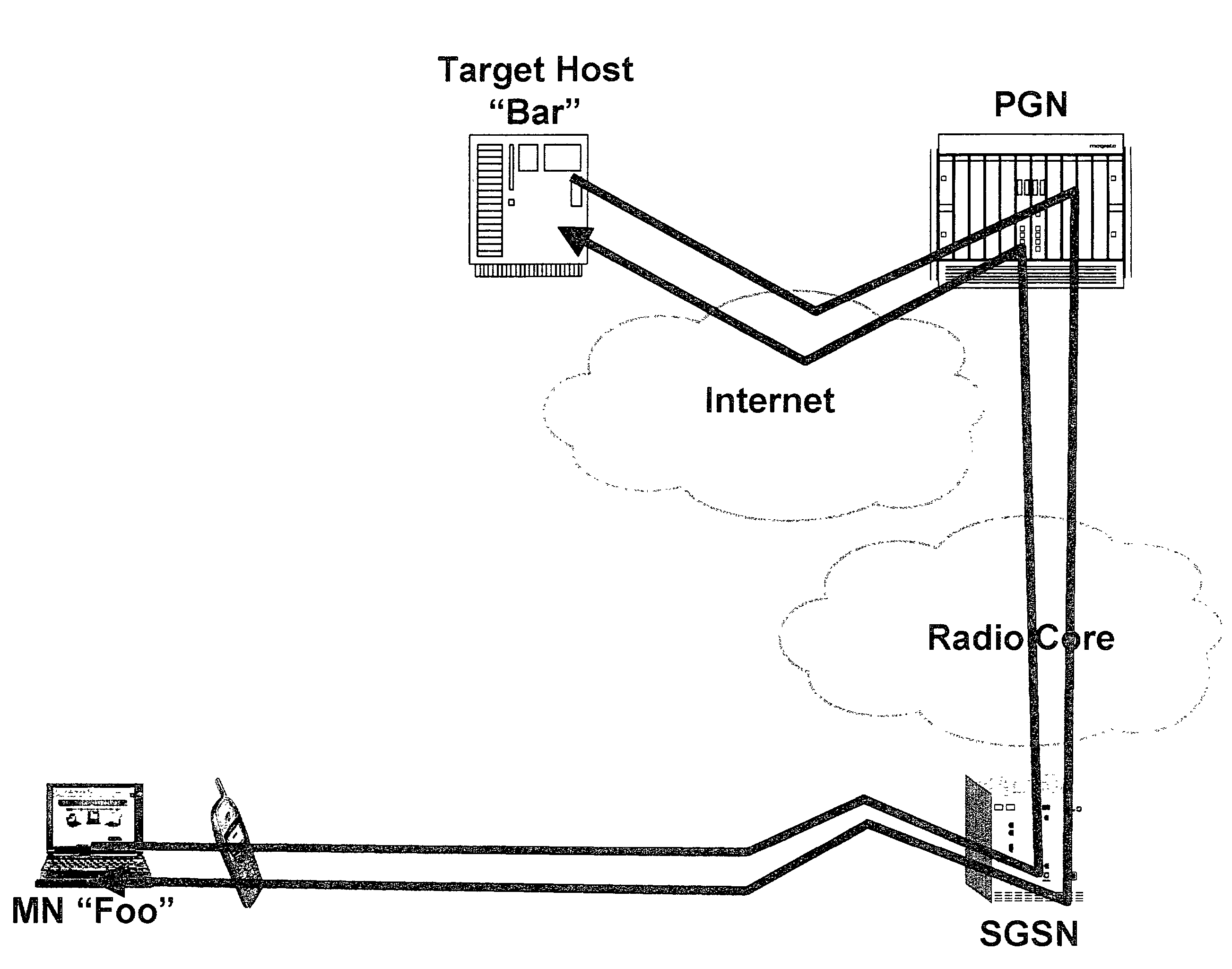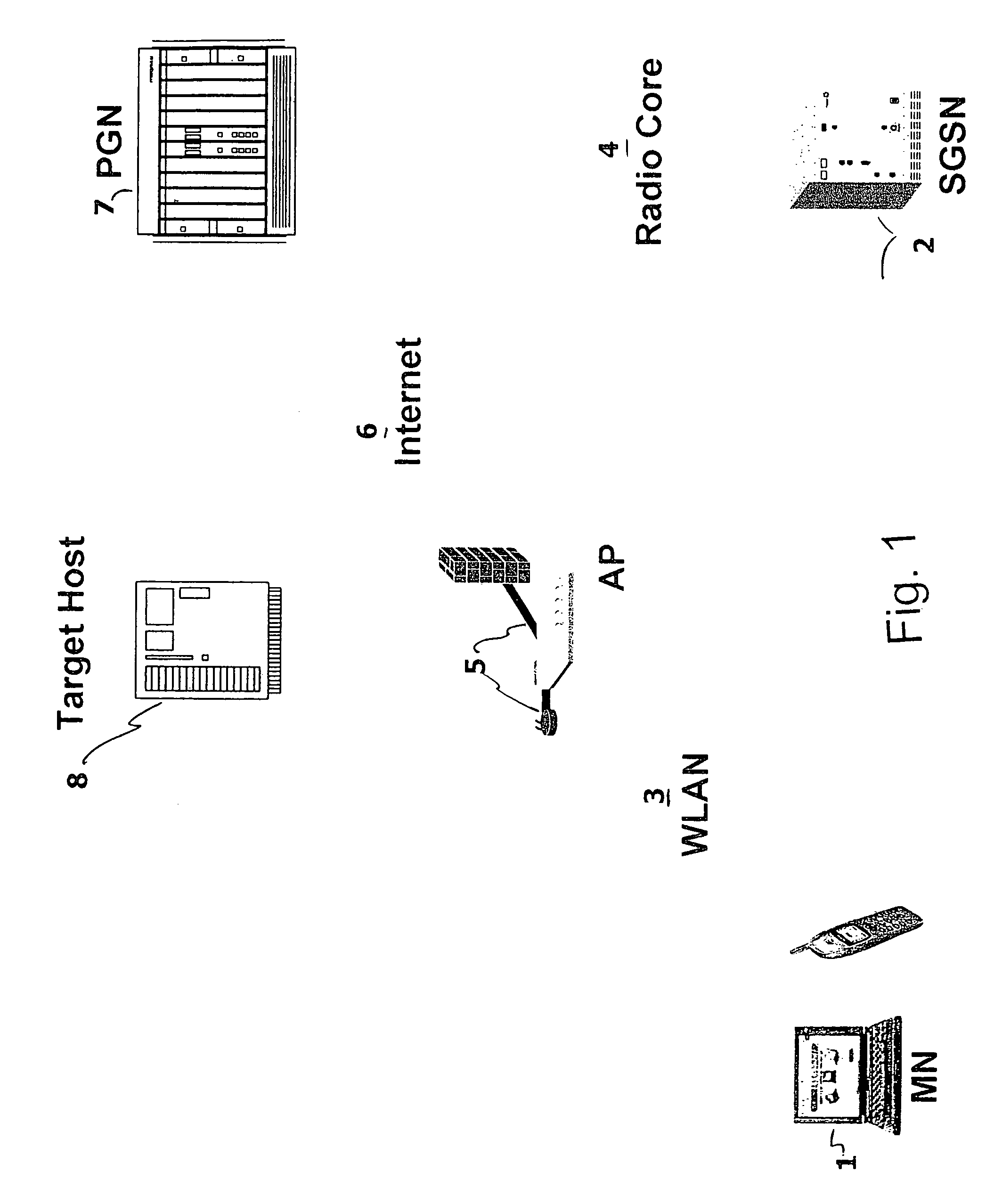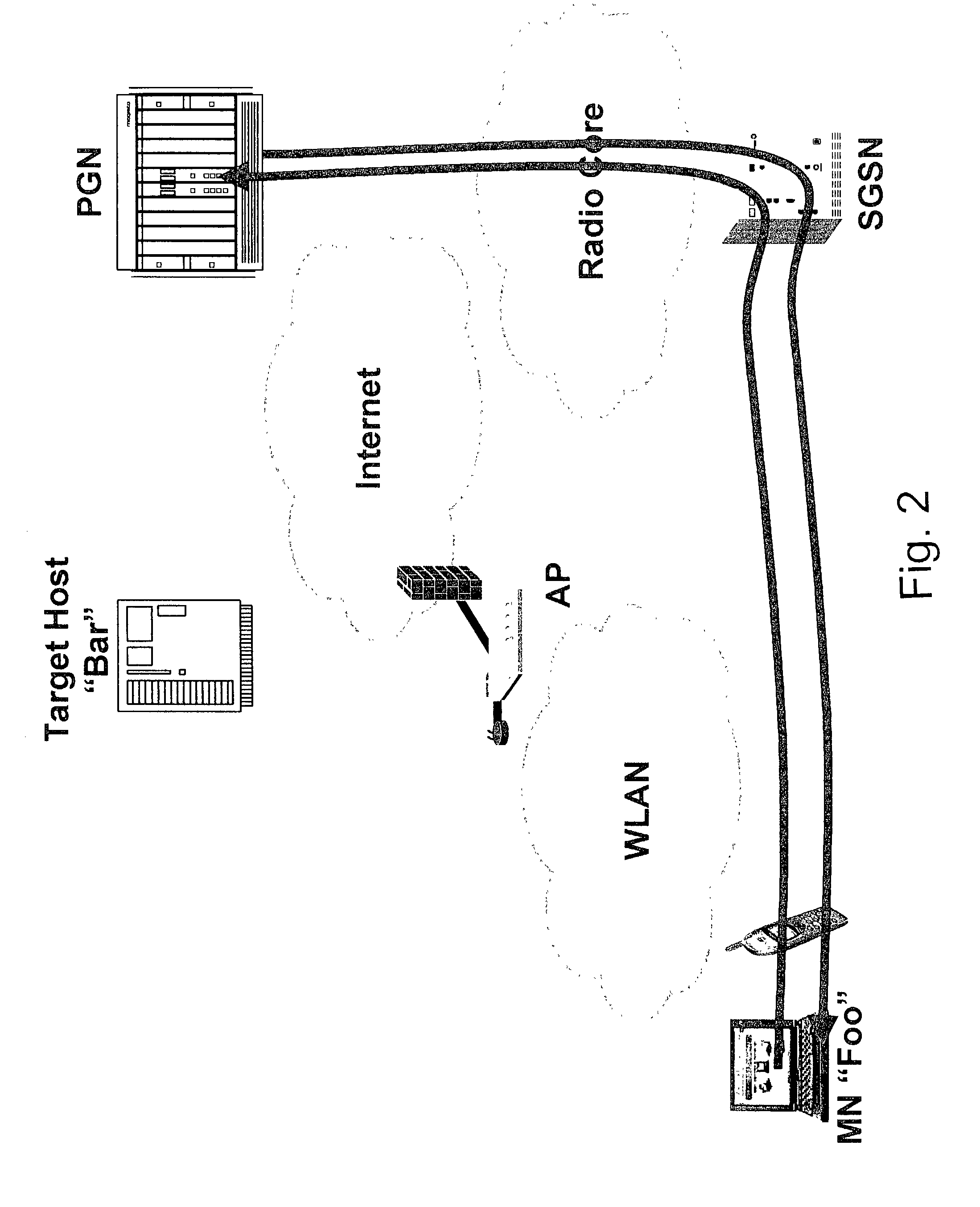System and method for secure network roaming
a network roaming and network technology, applied in the field of network systems, can solve the problems of significant security problems, users are vulnerable to a number of different attacks, and the security of wireless networking environments is a serious concern
- Summary
- Abstract
- Description
- Claims
- Application Information
AI Technical Summary
Benefits of technology
Problems solved by technology
Method used
Image
Examples
Embodiment Construction
[0061]Referring to the drawings in particular, the invention operates within a network infrastructure shown in FIG. 1. A mobile node (MN) 1 is provided in the form of a laptop computer, a PDA or other mobile device. The MN 1 includes a radio frequency transceiver. This can be used with a WLAN 3. The WLAN 3 includes normal LAN components such as a server connected to nodes via wires such as twisted pair wires and operating using Ethernet (carrier sense multiple access / collision detection CSMA / CD or IEEE 802.3). With a WLAN at least some of the nodes are formed of an MN 1 with an access point (AP) 5. The AP 5 includes a radio transceiver connected by wires (such as twisted pair wires) to a hub, switch or router of the LAN and connected from this hub to the server. The wireless connection between AP 5 and MN 1 uses the IEEE 802.11 standard (other public standards or proprietary wireless node or hot spot systems and standards may be used instead).
[0062]The MN 1 may also be used with a r...
PUM
 Login to View More
Login to View More Abstract
Description
Claims
Application Information
 Login to View More
Login to View More - R&D
- Intellectual Property
- Life Sciences
- Materials
- Tech Scout
- Unparalleled Data Quality
- Higher Quality Content
- 60% Fewer Hallucinations
Browse by: Latest US Patents, China's latest patents, Technical Efficacy Thesaurus, Application Domain, Technology Topic, Popular Technical Reports.
© 2025 PatSnap. All rights reserved.Legal|Privacy policy|Modern Slavery Act Transparency Statement|Sitemap|About US| Contact US: help@patsnap.com



